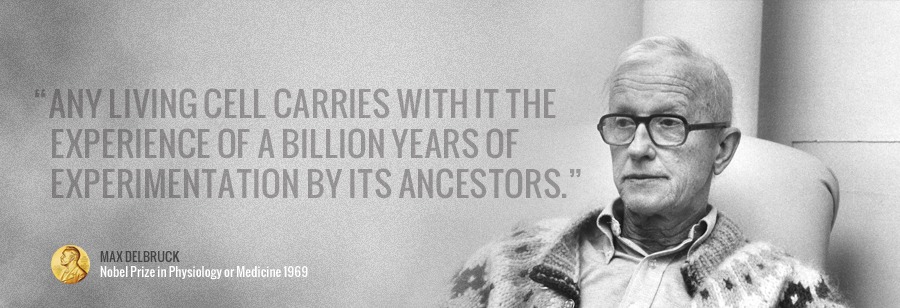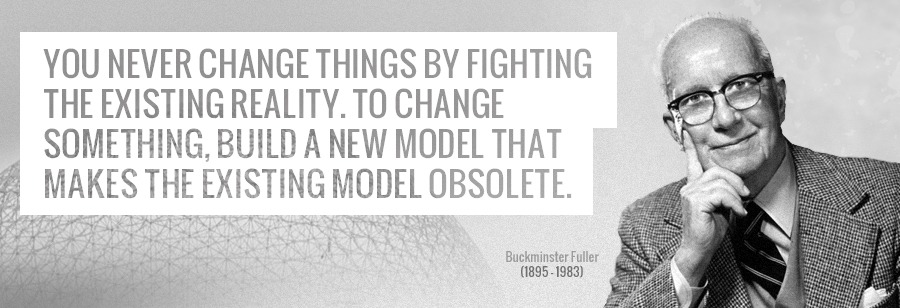All Living Cells on Earth Have a Common Single Origin

NATURAL LAWS APPLY TO ALL LIVING CELLS, INCLUDING CANCER CELLS
We invite the reader to consider a new perspective, or conceptual change, about the nature and biology of cancer cells explained under a phenomenon known in evolutionary biology as “atavism.” Under this concept, cancer is a cellular atavism in which differentiated cells reverse, not only to become undifferentiated, but to actually revert even further to their primitive, most ancestral levels of cell function and organization, regaining survival advantages and behavioral traits of their past ancestral cellular life as single-celled organisms. This new perspective can help us to demystify the cellular phenomenon known as “malignant transformation” and allow us to treat cancer more effectively, and with it, increase patients’ chances of survival.
One of the most compelling pieces of evidence in favor of a pre-existing, universal, and highly regulated genetic phenomenon in cancer is the orderly and predictable pattern in which cancer cells behave clinically. In other words, all cancer cells are by nature compelled to migrate, invade, and digest surrounding tissues by releasing simultaneously predetermined proteolytic enzymes specific to each type of tissue they encounter (e.g., bone, muscle, etc.); they instinctively seek out and penetrate blood vessels for transport to distant organs where they can continue their life cycle; they are inherently capable of being transmitted from one individual to another [1] to perpetuate their own existence; they have a preexisting capacity to develop tolerance to cytotoxic agents or hostile environments, and they end the life of the host if they are not removed.
But where and how did cancer cells learn or acquire those unique cell functions and capabilities since it is an established fact that cells — whether normal or diseased — cannot create new cell functions de novo [2]. Cells can only perform or stop performing functions that are instructed in the genome of cells from past evolutionary experience. This fact was epitomized in 1949 by Max Delbrück [3], who explained that the functions of any one living cell do not arise by spontaneous generation but are the product of past historical events:
“Any living cell carries with it the experience of a billion years of experimentation by itsancestors. You cannot expect to explain so wise an old bird in a few simple words.”
Although it may seem absurd to compare human cells (normal or cancerous) with fungal, protozoal, or bacterial cells, the cell is the only form of life on Earth, and all cells living today are descendants of a common bacterium-like, single-celled ancestor [4]. All living cells on this planet share not only the same physicochemical structures (DNA, RNA) and processes (protein synthesis, metabolism) needed to perform life’s basic functions but also the genes that regulate those functions [2]. Biochemical pathways and segments of DNA sequences in our cells, for example, date back to a time of single-celled life in the Precambrian era more than 700 million years ago [5].
To survive in nature, cells organize in one of two possible forms: either as self-sufficient, single-celled organisms or as multicellular organisms formed by mutually committed, interdependent cells with diverse specialized functions [6]. Therefore, once the malignant transformation takes place, the resulting cancer cells must either exist in harmonious cooperation among themselves and with the host’s cells (which we know it does not happen), or they need to become self-sufficient, single-celled, independent organisms in their struggle for survival.
It was, Rudolf Virchow, the father of pathology, who first noted that the life cycles of pathogenic single-celled organisms and cancer cells were indistinguishable. In 1888, Virchow stated that he could not separate the growth, invasion of tissues, metastases to distant organs, and killing of the host by unicellular organisms, such as bacteria, fungi, or protozoa, from those of true cancer processes. However, Virchow erroneously believed that cancer cells had acquired their malignant traits from bacterial cells after being infected by them [7].
A more logical explanation for the similitude between cancer cells and single-celled organisms came from British cancer surgeon Herbert Lumley Snow. Snow regarded cancer cells as having reverted to their evolutionary past, thus becoming independent, single-celled beings that re-express the pathogenic traits and behavioral characteristic of their unicellular ancestors [8]. He stated in 1893:
“It is to be remembered that the whole complex organism, which we term the body, is built up of minute cell elements which were once, to all intents and purposes, protozoicanimalculae like the amoeba…. [Cancer] is but a process of devolution, of reversion of cells to a primordial amoebiform condition, in which they become parasites, or rather autosites.”
CANCER, A CELLULAR EXPRESSION OF OUR ORIGIN
The clinically relevant cellular features and biological functions that we regard as malignant — for example, an independent existence, unlimited replicative potential, invasion and digestion of surrounding normal tissues, migration and nonrandom tissue-specific metastatic colonization of distant organs, transmissibility to other hosts, the ability to develop drug resistance, and the capacity to kill the host — are not unique to cancer cells. The same pattern of cellular behavior is characteristic of pathogenic or opportunistic unicellular organisms (bacteria, fungi, and protozoa) when they exist within a multicellular organism. Not surprisingly, many of the molecular changes associated with malignancy involve the same (orthologous) genes and protein products associated with the pathogenicity and virulence of single-celled organisms. Such changes include the activity of oncogenes in protozoal organisms (such as Src, Pak, Ras, and Akt) [9, 10]; the presence of tumor-suppressor genes (such as p53) [11]; and the overexpression of proteins involved in adhesion, invasion, and metastasis (such as integrins, proteolytic enzymes, high-mobility group box 1 protein, and E-cadherin in bacteria and amoebas) [12]. The universality of the clinically relevant pathogenic phenotypes of cancer cells and single-celled organisms would suggest that these cells are expressing a common gene module. One could infer that this “malignant genotype” represents a set of genes that are basic and essential for cell survival and that has been conserved in the genome throughout cellular evolution, from its origin in single-celled life to the development of multicellular organisms, where it remains silent [3].
Although atavism, or the reappearance of ancestral evolutionary characteristics in an organism, is a biological fact [13, 14], the existence of this reversion at the cellular level has not been scientifically documented. However, activation of previously silenced, noncoding DNA in the cell has been postulated as a likely source of past genetic informationand cell functions [42], and the source of the malignant state [15-16].

REFERENCES
- Welsh JS. Contagious cancer. Oncologist. 2011; 16:1-4.
- Alberts B, Johnson A, Lewis J, Raff M, Roberts K, Walter P. Molecular biology of the cell. 4th ed. New York: Garland Science; 2008.
- Delbrück, M. A physicist looks at biology. Trans Conn Acad Arts Sci. 1949; 38:173-190.
- Theobald DL. A formal test of the theory of universal common ancestry. Nature. 2010; 465:219-222.
- Ying M, Zhan Z, Wang W, Chen D. Origin and evolution of ubiquitin-conjugating enzymes from Guillardia thetanucleomorph to
hominoid. Gene. 2009; 447:72-85. - West SA, Fisher RM, Gardner A, Kiers ET. Major evolutionary transitions in individuality. Proc Natl AcadSci USA. 2015; doi:10.
1073/pnas.1421402112. - Schmidt A, Weber OF. In memoriam of Rudolf Virchow: a historical retrospective including aspects of inflammation, infection and
neoplasia. ContribMicrobiol. 2006; 13:1-15. - Snow HL. A treatise, practical and theoretic, on cancers and the cancer-process. London: Churchill; 1893.
- Watari A, Iwabe N, Masuda H, Okada M. Functional transition of Pak proto-oncogene during early evolution of metazoans.
Oncogene. 2010; 29:3815-3826. - Segawa Y, Suga H, Iwabe N, et al. Functional development of Src tyrosine kinases during evolution from a unicellular ancestor to
multicellular animals. Proc Natl AcadSci USA. 2006; 103:12021-12026. - Mendoza L, Orozco E, Rodríguez MA, et al. Ehp53, an Entamoeba histolytica protein, ancestor of the mammalian tumour
suppressor p53. Microbiology. 2003; 149:885-893. - Abhyankar MM, Hochreller AE, Hershey J, et al. Characterization of an Entamoeba histolytica high-mobility-group box protein
induced during intestinal infection. Eukaryot Cell. 2008; 7:1565-1572. - Tomic N, Meyer-Rochow VB. Atavisms: medical, genetic, and evolutionary implications. PerspectBiol Med. 2011; 54:332-353.
- Zanni G, Opitz JM. Atavisms: phylogenetic Lazarus? Am J Med Genet A. 2013; 161A:2822-2835.
